 W
WUnited Empire Loyalists is an honorific which was first given by the 1st Lord Dorchester, the Governor of Quebec, and Governor-General of the Canadas, to American Loyalists who resettled in British North America during or after the American Revolution. At the time, the demonym Canadian or Canadien was used to refer to the indigenous First Nations groups and the French settlers inhabiting the Province of Quebec.
 W
WLoyalist House is a museum and National Historic Site located in uptown Saint John, New Brunswick. It was the home of the prosperous Merritt family, who occupied from its completion in 1817 until 1958. It was taken over by the New Brunswick Historical Society in 1961. Its current address is 120 Union Street.
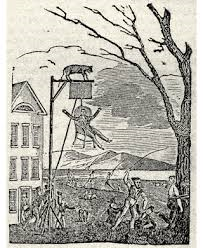 W
WDr. Samuel Adams was a physician, surgeon, farmer, land owner, and loyalist soldier, from Arlington, Vermont.
 W
WGideon Adams was a farmer, soldier, and politician in Upper Canada, British North America, British Empire, now Ontario, Canada.
 W
WChristopher Billopp was a British loyalist during the American Revolution. His command of a Tory detachment during the war earned him the sobriquet, "Tory Colonel". After the American Revolution he emigrated to New Brunswick, Canada along with other Loyalists and became a politician. He represented Saint John in the 1st New Brunswick Legislative Assembly.
 W
WMolly Brant, also known as Mary Brant, Konwatsi'tsiaienni, and Degonwadonti, was a Mohawk leader in British New York and Upper Canada in the era of the American Revolution. Living in the Province of New York, she was the consort of Sir William Johnson, the British Superintendent of Indian Affairs, with whom she had eight children. Joseph Brant, who became a Mohawk leader and war chief, was her younger brother.
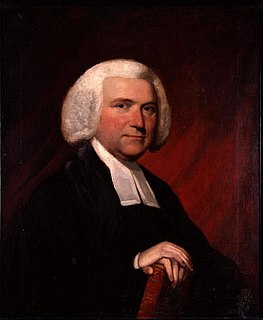 W
WMather Byles II, was a Congregational clergyman at New London, Connecticut Colony until 1768. In 1768 he entered the Established Church, and became rector of Christ Church, Boston.
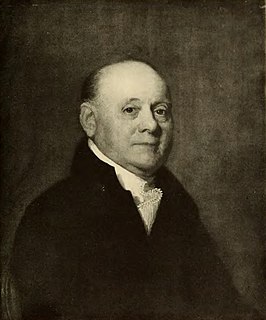 W
WWard Chipman was a New Brunswick lawyer, judge, and political figure. He briefly served as administrator for New Brunswick from 1823 until his death in 1824.
 W
WLieutenant-Colonel George Taylor Denison III, FRSC was a Canadian lawyer, military officer and writer.
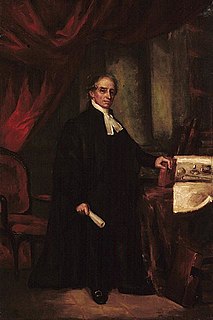 W
WSir Brenton Halliburton was the eighth Chief Justice of the Supreme Court of Nova Scotia.
 W
WJohn Howe was a loyalist printer during the American Revolution, a printer and Postmaster in Halifax, the father of the famous Joseph Howe, a spy prior to the War of 1812, and eventually a Magistrate of the Colony of Nova Scotia. He was born in Boston, Massachusetts Bay colony, the son of Joseph Howe, a tin plate worker of Puritan ancestry, and Rebeccah Hart.
 W
WCharles Inglis was an Irish clergyman who was consecrated the first Anglican bishop in North America, although technically of the Diocese of Nova Scotia.
 W
WSir John Johnson, 2nd Baronet was a leading figure in the British Indian Department, a Loyalist leader during the American Revolution, a magistrate in Canada, and a wealthy landowner. He was the son of Sir William Johnson, 1st Baronet, who was the first British Superintendent of Indian Affairs.
 W
WKings Landing is a New Brunswick, living history museum with original buildings from the period of 1820-1920. It was created around buildings that were saved and moved to make way for the headpond for the Mactaquac Dam.
 W
WThe Loyalist Man is an iconic sign located near the Reversing Falls in Saint John, New Brunswick. The figure was conceived of by Jim Stackhouse and painted by Ron Howard. It represents a Loyalist soldier from the American Revolution, as many of Saint John's early settlers were Loyalists. The sign was first displayed in the 1950s though it has been taken out of use on occasion. It was originally created to encourage residents to shop at local stores. In 2005 the city replaced it with a "generic explorer figure" in an attempt to refurbish the city's image but it eventually returned. In 2014 the sign was removed temporarily for repairs after it lost a leg. The City of Saint John has used the image on other signs, pins and various marketing materials over the years. Loyalist Man was also featured as a superheroic character in the Interaction School of Performing Arts' The Saint John History Mystery, as portrayed by Elijah Wilcott.
 W
WDuring the American Revolution, those who continued to support King George III of Great Britain came to be known as Loyalists. Loyalists are to be contrasted with Patriots, who supported the Revolution. Historians have estimated that during the American Revolution, between 15 and 20 percent of the white population of the colonies, or about 500,000 people, were Loyalists. As the war concluded with Great Britain defeated by the Americans and the French, the most active Loyalists were no longer welcome in the United States, and sought to move elsewhere in the British Empire. The large majority of the Loyalists remained in the United States, however, and enjoyed full citizenship there.
 W
WEnoch Moore, son of Samuel Moore U.E. and Rachel Stone, married Elizabeth Smith, daughter of James Smith and Hannah Hawksworth, on March 30, 1803 in Old Holy Trinity Church, Lower Middleton, Annapolis County, Nova Scotia. Elizabeth was born on April 18, 1784 in Wilmot Township, NS, died on March 3, 1871 and was buried in New Milford Cemetery, Winnebago County, Illinois. Enoch was a direct descendant of one of New Jersey's early colonial officials, Samuel Moore.
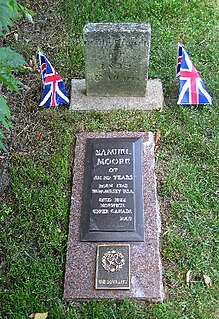 W
WSamuel Moore is notable as a leader in the early establishment of the Religious Society of Friends (Quakers) in Maritime Canada, and as the progenitor of a number of civic, religious and political leaders in both Canada and the United States.
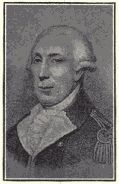 W
WJohn Munro, was generally referred to as 'Captain The Hon. John Munro of Fowlis' to distinguish him from others with the same name and rank. He was a Highland soldier who after the Seven Years' War received extensive land grants at Albany, New York, becoming a prominent Tory and merchant associated with Simon McTavish and the fur trade. Having gained a reputation for no-nonsense, he was made a magistrate and given further land at Vermont to bring Ethan Allen and the Green Mountain Boys to order. Ever the ardent Loyalist, Munro fought for the British during the American Revolutionary War which led to the loss of his land following the American victory. He re-settled in Upper Canada, where he became a Judge and was appointed to the first Legislative Council of Upper Canada.
 W
WRobert Nelles was a businessman and political figure in Upper Canada.
 W
WWilliam Paine was a physician and political figure in New Brunswick. He represented Charlotte County in the Legislative Assembly of New Brunswick from 1786 to 1787. Paine was unusual in that he was a United Empire Loyalist who chose to return to the United States.
 W
WEly Playter (1776–1858) was a farmer, lumberman, militia officer, and member of the Upper Canada House of Assembly, who lived in and around York, modern day Toronto.
 W
WWilliam Dummer Powell was a Loyalist lawyer, judge and political figure in Upper Canada.
 W
WDufferin "Duff" Roblin, was a Canadian businessman and politician. Known as "Duff," he served as the 14th premier of Manitoba from 1958 to 1967. Roblin was appointed to the Senate of Canada on the advice of Prime Minister Pierre Trudeau. In the government of Brian Mulroney, he served as Senate Leader. He was the grandson of Sir Rodmond Roblin, who also served as Manitoba Premier. His ancestor John Roblin served in the Upper Canada assembly.
 W
WJohn Roblin was a farmer and political figure in Upper Canada.
 W
WJohn Philip Roblin was a farmer and political figure in Upper Canada and Canada West.
 W
WSir Rodmond Palen Roblin was a businessman and politician in Manitoba, Canada.
 W
WBrigadier General Henry Norlande Ruttan was a Canadian engineer and Canadian Army Officer. In 1885, he became the first city engineer of Winnipeg, remaining in office until his retirement in 1914.
 W
WJames Farrand Ruttan was a real estate agent and politician in Ontario. He was mayor of Port Arthur from 1891 to 1892.
 W
WÆneas Shaw UE was a soldier and political figure in Upper Canada.
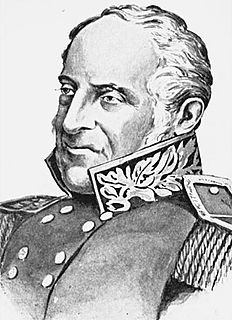 W
WGeneral Sir Roger Hale Sheaffe, 1st Baronet was a Loyalist General in the British Army during the War of 1812. He was created a Baronet in 1813 and afterwards served as Commander and acting Lieutenant Governor of Upper Canada. There is conflicting information to statements regarding his military accomplishments (1812) in the "Letters of Veritas" in and around page 50.
 W
WSamuel Bois Smith was a Loyalist British Army officer and politician. He was appointed to the Executive Council of Upper Canada and appointed Administrator of Upper Canada.
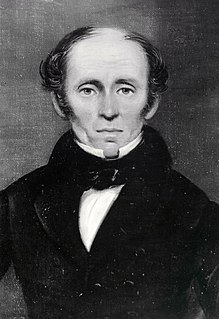 W
WGeorge Okill Stuart was an Anglican clergyman and educator who was born into a Loyalist family that came to Canada in 1781. He was born at Fort Hunter near Amsterdam, New York, the son of the Reverend John Stuart and Jane Okill. The family first settled in Montreal but moved to Cataraqui in 1785.
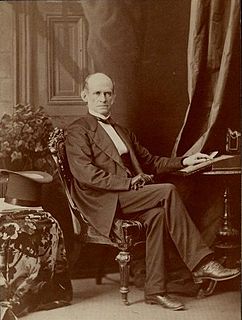 W
WGeorge Okill Stuart was an Anglo-Quebec lawyer, judge and political figure.
 W
WJohn Stuart was a Church of England clergyman, missionary, educator, and Loyalist. He is noted for being the first chaplain of the Legislative Council of Upper Canada, for being the first Anglican priest in what is now Ontario, for building the first church in what is now Kingston, Ontario, and for opening the first grammar school in Upper Canada.
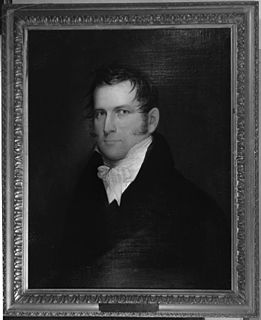 W
WSir James Stuart, 1st Baronet of Oxford was a lawyer, judge, and political figure in Lower Canada.
 W
WSir John Wentworth, 1st Baronet was the British colonial governor of New Hampshire at the time of the American Revolution. He was later also Lieutenant-Governor of Nova Scotia. He is buried in the crypt of St. Paul's Church (Halifax).
 W
WFrederick George Hilary Williams was an English–Canadian journalist, writer, and historian.